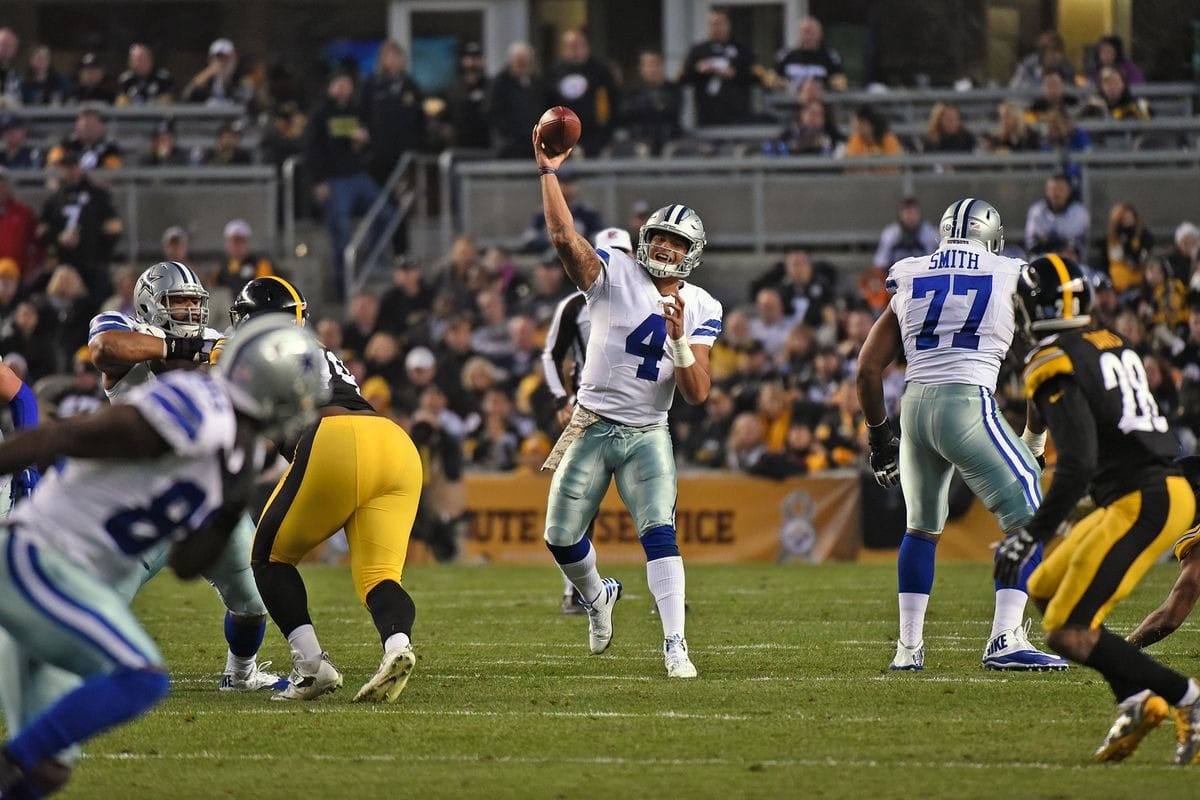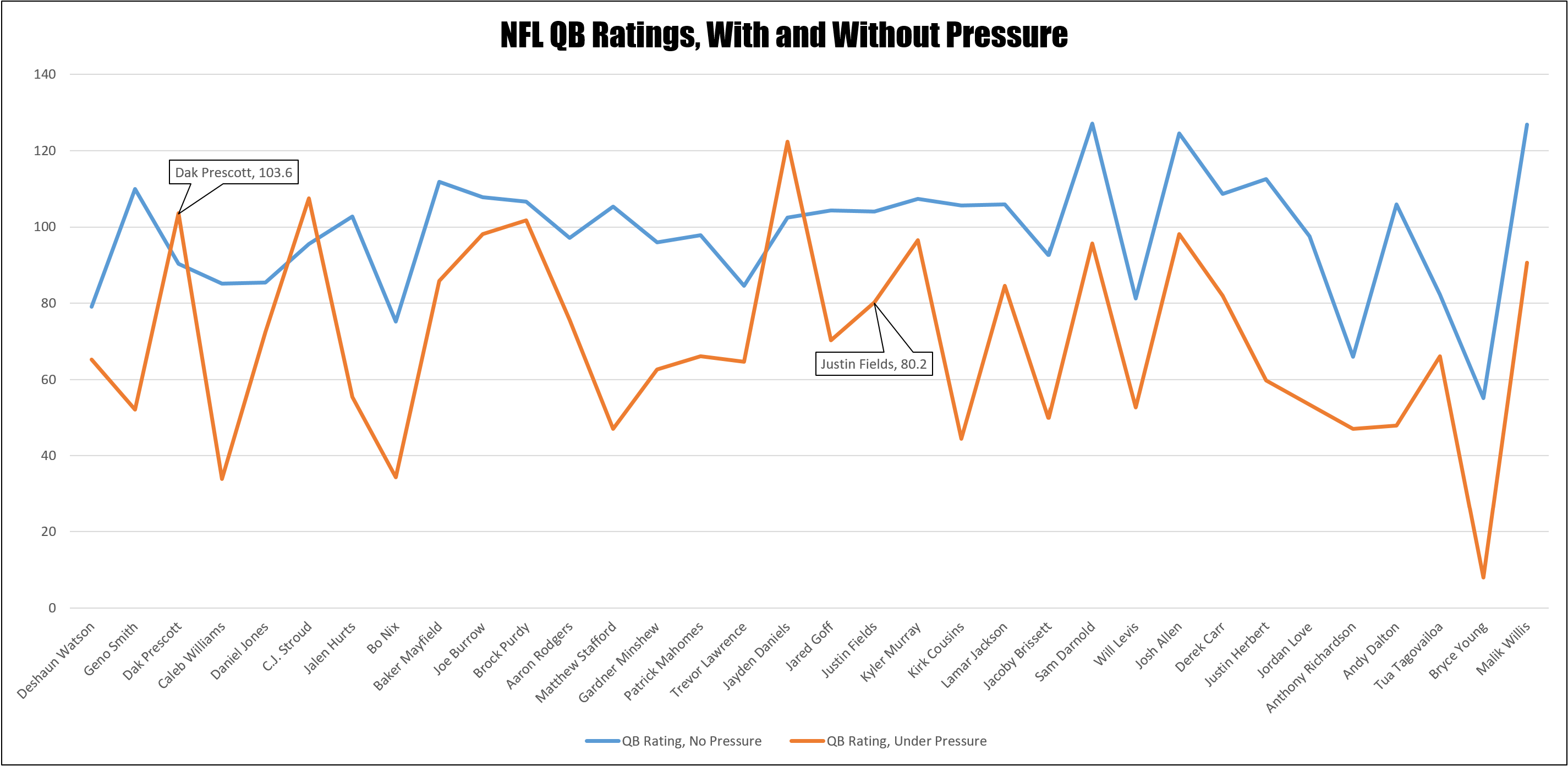
Quick Slant: The Love and the Hate - The NFL's Most Historical Inter-Conference Rivalry Plays Out on SNF
Cowboys @ Steelers, Sunday @ 8:20 PM
Few inter-conference matchups are as historically prestigious as Dallas and Pittsburgh. They have combined for eleven Super Bowl victories, three against each other—more than any other pairing. The Cowboys had a streak of consecutive winning seasons from 1966 to 1985, the longest of all time, and this wasn’t even their most dominant era at its apex. The Steelers have the longest active streak of winning seasons at 16, tied for the third-longest ever, a feat they’ve accomplished twice since 1972.
Founded in 1960, the Cowboys have the most Hall of Famers per year; established in 1931, the Steelers have the fourth. Along with San Francisco, Green Bay, and New England, Pittsburgh and Dallas are widely regarded as having two of the five largest worldwide fanbases. Their brands are iconic: the black and yellow, the Terrible Towels, the Steel Curtain, and one solitary sticker featuring the tri-color hypocycloids of the Steelmark. The silver and blue, the Lone Star of Texas wrapped in a simple white border – one of the most recognizable logos in the history of graphic design – and the nickname: America’s Team, which simultaneously makes one side of a crowded room puff out their chest and the other boil.
Each has a storied history, but their championships grow further in the rearview mirror. The Steelers won 16 years ago and three years before that. The Cowboys won their last in the 1995 season, beating the Steelers. Dallas’ stranglehold on popularity makes people sick; they’ve become a symbol of marketing over performance – of futility, swept under the rug, as they have remained the most valuable franchise in sports every year since 2016, regardless. Still, they have the sixth-best winning percentage in football since 2010, and the Steelers have the fourth. This year, the Cowboys are 2-2, and the Steelers are 3-1. Each has visions of a deep playoff run, each has flaws, and each sees Sunday night as a chance to prove they belong.
Cowboys’ Implied Team Total: 21
LT Tyron Smith was drafted in 2011, and RG Zack Martin was drafted in 2013; by 2014, the Cowboys’ offensive line was ranked first in the NFL by PFF, the first of three consecutive years. They ranked in the top five for three years after. During that span, the Cowboys led the league in rushing twice and were second twice. Smith was invited to eight Pro Bowls; Martin to nine. Martin is probably destined for Canton, but he’s now 33, and his best years are behind him. Smith suffered from chronic back injuries throughout the back half of his career (otherwise, he might be headed to the Hall of Fame). He is 33 and now a member of the New York Jets. It is the end of an era in Dallas – the crumbling bedrock of an institution.

This year, the Cowboys rank 24th in PFF team offensive line grade. They rank dead last in team rushing yards and 24th in pressure rate over expected. The Cowboys’ offensive line isn’t good at run blocking or pass blocking. There is room for growth with a youth movement afoot, but that likely won’t come in October 2024.
This is a lonely state of affairs when Dallas is set to square off against arguably the most terrifying edge rusher in football, T.J. Watt. Watt is already on the verge of his 100th sack at age 29 (he will probably get it in this game); he’s been a Defensive Player of the Year finalist four times and won once, and he owns a share of the single-season sack record, tying Michael Strahan in 2021 with 22.5 (Strahan played a 16-game season). He’ll line up against Terrance Steele all night long; expect pressure.
The Steelers have generated the ninth-best pass rush over expected in the league. Without Alex Highsmith, Watt's bookend, who has been out with an injury, Nick Herbig has filled in effectively. The Steelers’ defensive pass rushers are expected to enjoy one of the most significant advantages of the week against the Cowboys’ front.
Yet, QB Dak Prescott has been one of the best in the league at handling pressure this year; his quarterback rating is better under duress than when kept clean.

This may be fool’s gold. As usual, QB Rating is affected mainly by TDs, INTs, and, to a lesser degree, big plays. Variance with these types of stats is notorious in small sample sizes; since Prescott lags in adjusted completion percentage, aDOT, and PFF’s Big Time Throw Rate while under pressure, we might expect this anomaly to normalize (also, every QB tends to play worse in the long run when pressured).
Prescott has performed reasonably well, but it feels like he’s the driver of the entire mechanism more than ever before – as if all the little limbs the Cowboys have pruned to make way for the massive contracts of a few have finally cut to the roots, and the remaining superstars are too outnumbered.
CeeDee Lamb feels more bottled up. He was second in ESPN’s Open Score a year ago, a stat that is the stickiest of ESPN’s three signature receiver scores (Open, Catch, and YAC). Even so, Lamb has tumbled to a tie this year for 48th. His volume is certainly down from last year’s pace. After earning a mind-boggling 181 targets a year ago, catching 135 receptions, the sixth-most in an NFL season all-time, Lamb is pacing for 136 targets and 85 receptions this year, roughly 63% of last year’s output. His market share is down to 22% this year, tied for the team lead with Jake Ferguson; Lamb drew 30% last year.


